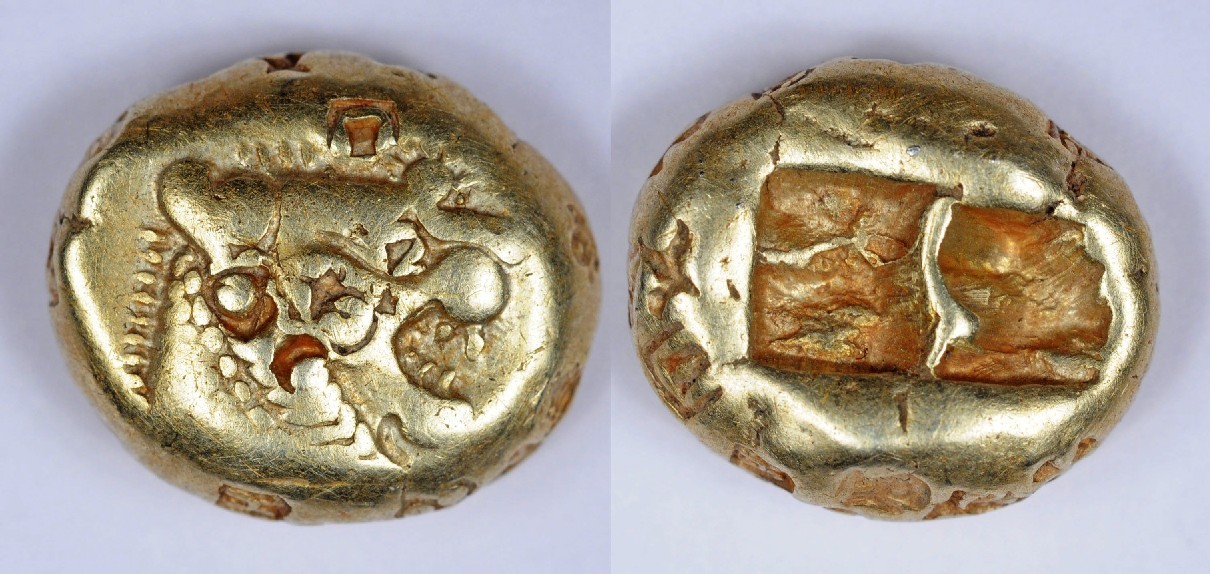Why is Bitcoin more like the monetary system of the ancient Sumerians than the Fed?
Throughout the last millennium, money has taken many different forms. For over seven thousand years, gold and silver have remained unchanged favorites, but the nature of money is very dependent on the context. Precious metals, grain, butts of axes, beads, animal skins, rum, cigarettes - all these things were once used as money. This allows us to say that money can be called everything that people collectively agree to use in this capacity, and the choice of a specific measure of value depends on the availability and ease of use of certain things in this situation.
Currency economists agree that money can serve at least three different purposes: as a unit of account, means of accumulation, and means of exchange. In other words, you can use them to keep track of who, to whom and how much owes, set aside expenses for later and for trading.
A number of properties simplify these functions. Money should be resistant to wear and tear, portable, divisible, rare (but not too much) and replaceable. In addition, any monetary unit must in all senses be completely identical to other similar units. In practice, different forms of money meet these criteria to a greater or lesser extent. Micronesian Paradise Stones, for example, are huge limestone discs weighing up to 4 tons. What they definitely lack is portability and divisibility, which, however, they more than compensate for the increased wear resistance and complexity of the fake.

Stones of paradise
Stones of Paradise is an interesting precedent for the latest forms of money. They have much in common with digital currencies, such as Bitcoin, information about the monetary units of which are recorded in registries distributed among nodes participating in the network. When the stone of paradise was used (and sometimes used now) as a means of payment, usually for an important operation, such as the transfer of a dowry or the formation of a political union, it was rarely physically moved. Instead, the community held a meeting at which its members collectively agreed that a new owner appeared at the stone. The same thing happens on the Bitcoin network: the registry is being updated to reflect changes to what and to whom it now belongs.
Origin of money
Despite the fact that during the last millennium money took various forms, people have always gravitated towards gold and silver. Attractive, scarce, malleable and resistant to oxidation, they began to play the role of default money, at least since the Sumerians. Anthropologist David Graber, author of Debt: The first five thousand years, notes that some of the earliest written texts are devoted to establishing a fixed exchange rate for silver to barley, that is, in fact, the silver standard of the time . It is also possible that the money was invented in the process of erecting huge and very complex from the point of view of architecture and construction of temple complexes of the ancient Near East as a tool for keeping records, simplifying the payment of labor and other expenses. There is a competing theory,
One way or another, money at this stage of history, as a rule, consisted of silver ingots, weighed at the time of transfer to the new owner, and the purity of the metal was determined using a certain weight standard. This system may not have been highly efficient, but it worked and was accessible to all social groups. Thanks to her, the money of that time could actually be used as money. It was a technology that people created for themselves. Market forces could increase or decrease the value of silver in relation to other raw materials, such as grain or textiles, but no one could control it or change its stocks dishonestly.
Then, about 2600 years ago, the production of the first coins was established in Lydia (modern Turkey). The seigniorage, or right to make money, was quickly assigned to the king. After that, money became an instrument of the state, not people. The king could reduce the precious metal content when minting coins, replacing it with cheaper metals such as copper and appropriate the difference to himself. This lucrative source of income was subsequently used more than once by the Roman emperors to finance wars. Of course, such actions depreciated the currency and often caused hyperinflation, as happened under the reign of King Henry VIII, popularly nicknamed the "old copper nose." The monarch so greatly reduced the value of the English penny that the silver surface of the coin was quickly erased, exposing the copper base,

Coin 619-561 years. BC, Lydia
The growing influence of free money
The effect of seigniorage and the inflation that often accompanies it was to transfer part of the value from the end users of money, ordinary people to those who created it, that is, to the state. Of course, the approach in which ingots of precious metal were used as a means of exchanging goods and services can hardly be called “technology” or, even less, comparing it with modern decentralized concepts. Nevertheless, this idea cannot be underestimated. By the standards of the fifth millennium BC, it was a real fintech, which quickly turned into a means of retaining power.
Further intervention was associated with the advent of the first banks. Their work was based on a rational idea: keeping a large amount of gold and silver at home is very risky, so wealthy individuals agreed to pay the bank to do it for them. Customers could withdraw funds when needed. After some time, it became obvious that pulling gold out of the vault was not necessary at all. The bank could give you a receipt granting you the right to do so when necessary. So the first banknotes in history appeared. The state has applied the same approach to the so-called representative money, that is, banknotes secured by gold deposits. Theoretically, you could get back the face value of a banknote in gold. However, both banks and states have realized that they don’t have to keep all the gold stock under which they issued banknotes. They could lend part of the stock at a percentage, or, in the case of government agencies, use it for other purposes. The logical conclusion of this process was the emergence of fiat money, unsecured by any precious metals, but created at will (fiat - let it be, lat.) Their issuer.
In most countries, the central bank plays a role in creating money, while delegating most of its responsibilities to commercial banks, as a result of which all participants in the process profit from seigniorage. Inflation is built into a system that works more or less well only as long as the country's population trusts the issuer. If the latter goes too far, rampant inflation or the so-called hyperinflation will occur, which has already taken place in the Weimar Republic of the 1920s or modern Zimbabwe. Quantitative easing may be an unavoidable evil - the least worst of the existing solutions to the problem, however, it will be possible to evaluate the long-term consequences of creating so much money and the impact of this process on the country's economic development.
Blockchain money
This is the context in which Bitcoin appeared 8 years ago. It may sound wild, but bitcoins are in many ways more similar to the earliest forms of money than to fiat ones. And this is a very remarkable turn in the history of the development of money.
The Bitcoin account registry exists simultaneously on tens of thousands of computers around the world, as opposed to the complete control of modern currencies by a single organization, such as a bank or government. Like the Micronesian stones of Paradise, the ownership of bitcoins is achieved through universal consensus. Any dubious or fraudulent transactions with the registry will be noticed and stopped in time. Unlike paradise stones, however, bitcoins lend themselves very well to dividing even into small parts, up to numbers with eight decimal places. Existing in cyberspace, under the control of thousands of computers, such digital money becomes incredibly durable. The same can be said about portability: you can send bitcoins anywhere in the world in just a few seconds. Moreover, each unit of account of such a currency is easily replaceable and at the same time very rare, due to the limited supply of currency. At the same time, faking bitcoins is very difficult.
The earliest monetary transactions in history required the buyer and seller to weigh silver ingots, checking them against a reference to confirm the purity of the metal. Instead of weights and standards, Bitcoin uses mathematics: the "purity" of coins is verified and guaranteed using cryptographic methods - a kind of binary measure of authenticity.
Bitcoin is the same “tool for the people” that money was in the first 4,500 years of its existence, of course, if you do not take into account a small technical obstacle in the form of the need to understand how to create a Bitcoin wallet. The process of creating money, though not ideal, rewards those participants who protect the security of the network, while inflation, although possible, has its own limitations. Compare this with other digital currencies, whose stocks are limited from the very beginning of their existence, and they themselves reward the custodians of their registry with the help of small fees for conducting and fixing transactions.
Probably, for the first time since the invention of coin minting more than 2500 years ago, cryptocurrencies such as Bitcoin today allow money to return to fulfilling their original purpose, excluding from their work the power factor that has become inalienable due to the control over their issue by the state or banks. Of course, fiat money will not go anywhere in the near future and those Bitcoin supporters who claim that it will soon replace them or national currencies will have to wait a very long time, if only because state currencies have their advantages, and besides many property rights depend on them. Apparently, in the end we will see a variety of competing currencies, similar to what was already predicted by the Austrian economist Friedrich von Hayek in his book "Private Money". Among others, there will be improved versions of fiat currencies and assets with the help of the blockchain. The Waves platform, for example, was created to bridge the gap between the complex procedures of the modern monetary system and the blockchain, allowing, among other things, to integrate operations with new financial instruments such as gold or silver.
Thus, blockchain technology does not necessarily replace money in the form in which we know it today, but it will make it more suitable for their original purpose and the needs of the people who use it.

